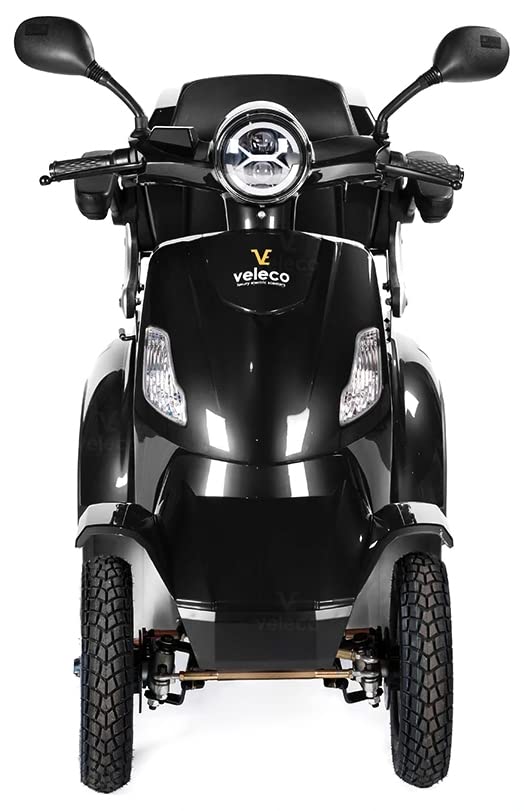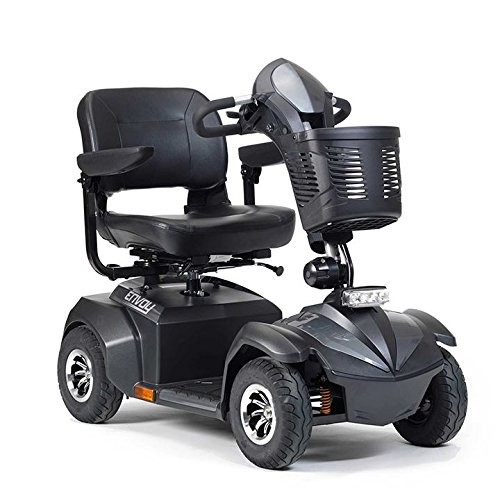The Top Companies Not To Be Monitor In The Modern Mobility Solutions I…
Lina Dorris
2024.09.12 19:14
59
0
본문
 Modern Mobility Solutions
Modern Mobility SolutionsExplore how cutting-edge technologies are transforming mobility. These solutions, ranging from electric vehicles to customized services, are changing the way we move.
 Find out how optimizing transportation systems can lead to more efficiency, which will result in less congestion and a more sustainable urban development. Our EMQX MQTT platform is perfect for real-time data exchange across these systems, as it is flexible and designed to accommodate a high volume of devices at the same time.
Find out how optimizing transportation systems can lead to more efficiency, which will result in less congestion and a more sustainable urban development. Our EMQX MQTT platform is perfect for real-time data exchange across these systems, as it is flexible and designed to accommodate a high volume of devices at the same time.Electric Mobility
Foldable Electric mobility Scooter mobility is the use of electricity to power vehicles, such as electric bikes and 3 wheel electric folding mobility scooter compact portable cars. This technology reduces the emissions of carbon dioxide and air pollutants, while providing consumers with the most secure and convenient transport options. However the transition to electric mobility isn't without its obstacles. These challenges include minimizing the energy cost, reducing range anxiety, and ensuring an efficient charging infrastructure.
To help address these challenges To address these issues, a variety solutions are emerging all over the world to promote electric mobility and reduce environmental impact. These solutions include swapping batteries, improving battery technology to increase range, reduce charging time, and increasing the number of charging stations. Governments can also motivate customers to purchase EVs by offering tax credits and subsidies.
Increasing consumer demand for environmentally friendly transportation options has prompted an explosion in innovations designed to increase sustainability. This includes mobility-as-a-service, smart parking and traffic management systems, shared 3 wheel electric mobility scooter for adults uk mobility, and even high-speed electric vertical take-off and landing (eVTOL) taxis.
E-mobility is a crucial aspect of a broader vision for the future since it reduces pollution and congestion while providing better transportation experiences for urban populations. It will take a massive transformation of the transportation system and an entirely new model of sustainable energy for it to be fully beneficial to society.
It is therefore essential to comprehend the potential risks and consequences that could be a result of this revolution. This includes the need for taking into account the impacts on the economy, the environment, and society at large. There are a number tools to evaluate the impact of technological advances. They include life cycle assessment methodologies.
Using these tools can help businesses make informed choices about the best ways to invest in e-mobility. By integrating multiple solutions into their operations, companies can maximize the benefits of the e-mobility. This will eventually result in an environmentally sustainable future for all of the planet. TUV SUD has more than a century of expertise in safety engineering for automobiles and a wide range of services, can provide comprehensive assistance to companies on their journey to eMobility. From the earliest blueprints to market commercialization We're your one-stop resource for the secure integration of electric mobility technologies.
Connectivity
In an era where customer experience is now the new standard for service seamless integration is the key for a successful mobility solution. Discover how integrating connected vehicles into an intelligent system and deploying them can improve your organisation's operations.
The rise of shared mobility services is changing the way people travel. These innovative solutions to urban transportation provide alternatives to cars and are a promising tool to reduce congestion and carbon emissions in cities.
However, they face significant challenges to becoming fully established as viable alternatives to personal car ownership. They include the need for a sufficient transport infrastructure as well as the necessity of making fares affordable and the application the equity principle, which requires the same accessibility to mobility solutions for all sections of the society.
Despite these limitations, the expansion of shared mobility services has been rapid. Many of these solutions use data and algorithms that are smart that allow travelers to select and purchase a variety of transportation options through a single app. They also offer real-time updates, personalized services and are more convenient than traditional methods of transportation.
One of the key factors driving growth in the sector is the increased accessibility of low-cost 3 wheel foldable electric mobility scooter vehicles and charging stations. As a result, more and more people are switching to these clean and efficient methods of transport. Cities and towns are investing in green, sustainable transport infrastructures to promote biking, walking, public transit and sharing vehicles as an alternative to cars.
Another factor that is driving the shift towards sustainable commuting is micromobility solutions. These vehicles that are lightweight, such as electric mobility scooters for seniors scooters and bikes are being integrated into the urban transport networks. They provide a first- and last-mile solution for commuters and reduce their need for private cars.
Public-private partnerships are vital to overcome these obstacles and ensure micromobility's viability over the long term. This is particularly important for urban mobility solutions that require a substantial investment and must be tailored to local contexts. This approach is exemplified by MaaS platforms (mobility as service) which were developed by a combination of urban transport operators and technology companies.
Sustainability
Sustainability is a growing concern for modern mobility solutions as governments and consumers demand eco-friendly transportation alternatives. Find out how seamless integration between transport modes, real-time information and personalized services can transform the commuting experience and help reduce environmental impact.
The carbon emissions from fossil fuels are among of the primary causes for climate change. They also contribute to pollution in the central city areas, congestion, and health problems for the public, among others. Through the promotion of sustainable methods of mobility, such as cycling and walking, individuals can enjoy greater efficiency in their travel, as well as an improved quality of life.
Shared vehicles are a different way to encourage sustainable mobility. They generate more revenue through passengers fares than they cost to operate. This means that they are less likely to require taxpayer funds than traditional public transport.
However the pursuit of sustainable mobility requires a broad approach that goes beyond reduction of vehicle traffic and improving the efficiency of infrastructures in place. It requires the promotion of sustainable transportation alternatives as well as the redesign of urban space in order to reduce the use of private vehicles.
Smart mobility measures can increase the appeal of urban areas and make them more accessible by encouraging a shift to cycling and walking. They can also improve conditions for public transportation, biking and telecommuting. They may also incorporate pricing strategies that aim to increase the perceived cost of driving motorized vehicles, encouraging an increase in active and public transportation.
The implementation of congestion fees for example, for example, entices drivers to think about alternatives than their vehicle. Furthermore, the use of intelligent road systems increases the efficiency and safety of vehicles by enhancing the flow of traffic. The IoT allows infrastructures and vehicles to communicate. This allows for real-time monitoring of driving behaviour and the detection of congestion sources. The information is then used to adapt traffic management systems to the needs to reduce congestion and improve the overall performance of the transportation system. This allows for a better quality of life for everyone with less noise and pollution.
Enterprise Mobility
Enterprise mobility is the ability for employees to work from anywhere using a variety of devices. This technology includes mobile devices, cloud storage, and applications that allow workers to access their data and communicate with colleagues from anywhere. Enterprise mobility solutions can simplify communication and aid in more efficient decision making. They can also help reduce the amount of paper and storage space needed. Employees could, for instance upload a presentation on cloud-based storage services from their desktop PC and then access it through mobile devices to present it to clients.
The modern mobility industry is constantly evolving to meet the needs of both businesses and consumers. The increasing concern about sustainability is driving the demand for environmentally friendly transportation options, which can be achieved with a range of innovative solutions. Telematics systems, which allow vehicles and infrastructures to communicate with one another and improve traffic flow and reduce congestion are among the solutions. In addition, these systems allow for the integration of different transportation modes to offer a seamless, personalized journey.
Ultimately, mobility solutions should be designed to improve the lives of customers and guests. Hotels, for instance could benefit from providing its staff with mobile devices to easily and quickly access guest information. This would enable them to serve their guests more effectively, which in turn can improve customer satisfaction and loyalty. In the same way, healthcare providers who are able to remote work can provide better care to their patients.
For companies to implement these features, they must invest in enterprise mobile management (EMM). This includes devices and software that manage the security and privacy of personal devices as well as business-owned devices. They also shield sensitive data from cyber-attacks and ensure a positive experience for users. It can also save businesses money by avoiding the high costs of replacing or fixing damaged or stolen devices. EMM can help support BYOD initiatives, allowing employees to utilize their devices for work. It is crucial to have a solid acceptable use policy before implementing EMM. This will help to set clear expectations about employee behavior and reduce risks to the security of data for the company.



댓글목록 0
댓글 포인트 안내